Chef Roland Mesnier’s life was a journey of passion, perseverance, and pastry. His story, one that spans continents and decades, is filled with triumphs, laughter, and a deep commitment to his craft. As the White House executive pastry chef for 25 years and a mentor to countless aspiring chefs, Mesnier’s legacy is etched not only in the annals of American history but also in the hearts of those he inspired.
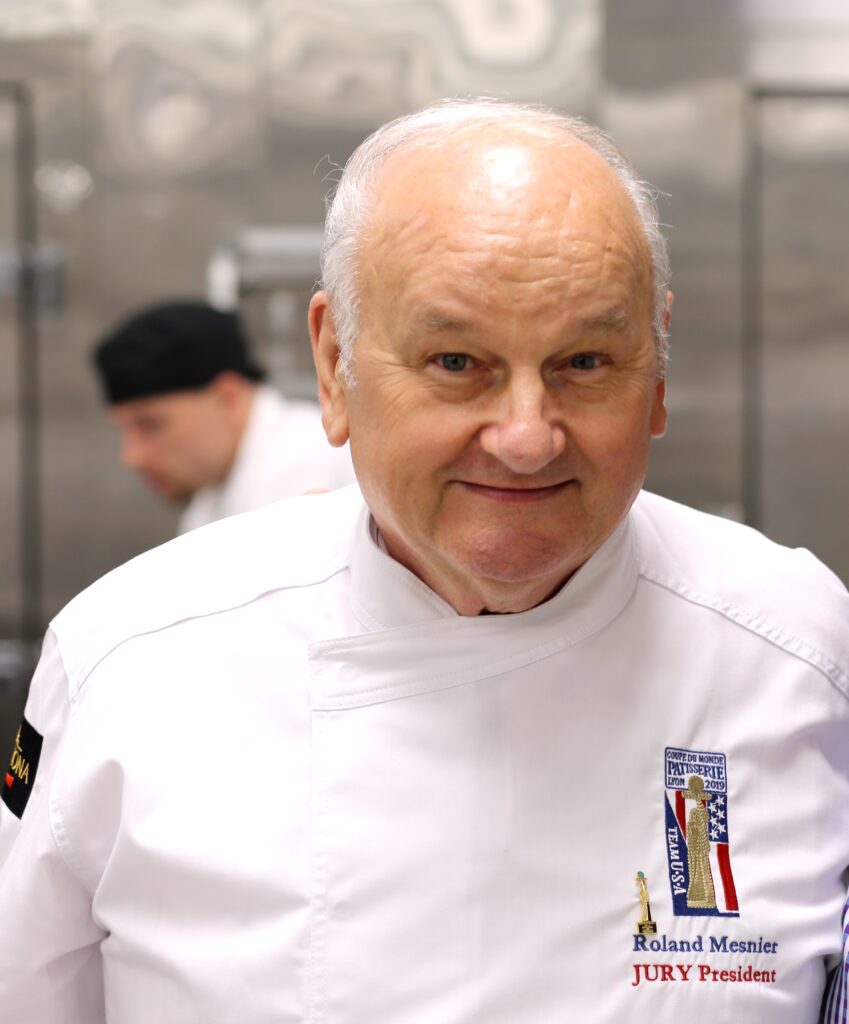
A Humble Beginning
Born on 8 July 8 1944, in the small town of Bonnay, France, Roland Mesnier was the youngest of nine children. His early years were marked by modesty, with his father working as a metal worker and his mother as a homemaker. The family’s simple lifestyle instilled in Mesnier a strong work ethic and a sense of determination that would serve him well throughout his career.
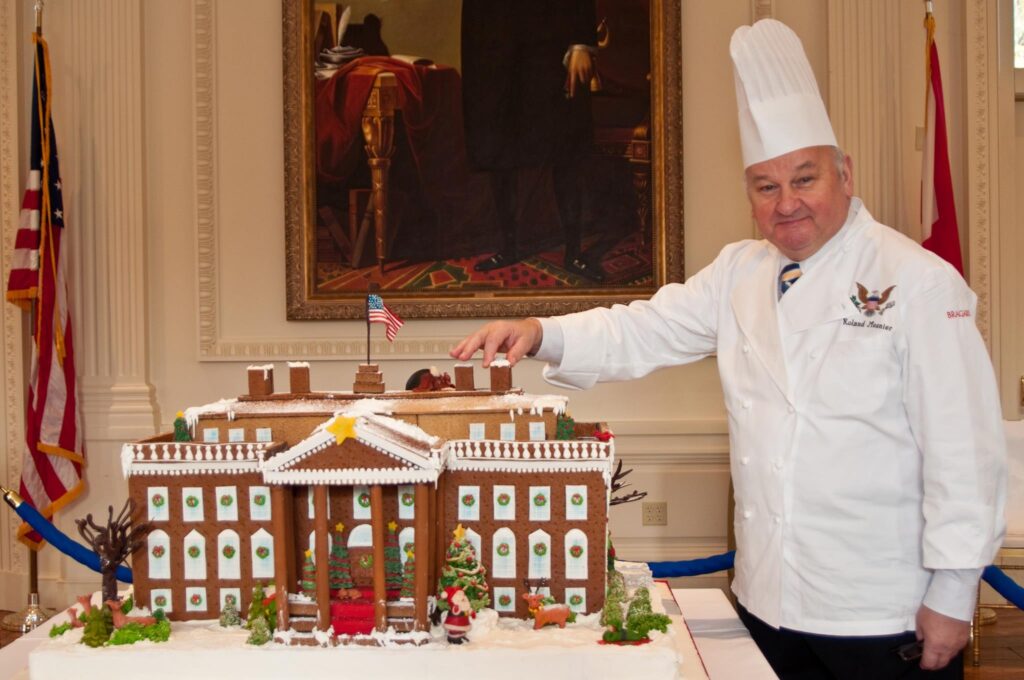
At the age of 14, Mesnier began his apprenticeship in a local pastry shop. His early exposure to the world of pastry ignited a passion that would lead him to pursue further training in the culinary arts. Mesnier’s talent quickly became evident, and he soon found himself working in some of the most prestigious pastry shops across Europe, including in Germany and the United Kingdom.
The White House Years

In 1979, Chef Mesnier’s life took a dramatic turn when he was appointed the White House executive pastry chef by first lady Rosalynn Carter. It was a position that would define his career and solidify his place in American culinary history. Over the next 25 years, Mesnier served five U.S. presidents, from Jimmy Carter to George W. Bush, and created desserts for countless state dinners, holiday celebrations, and special events.
One time, Mesnier shared that although President Jimmy Carter was a peanut farmer, he and his family disliked peanuts and therefore, he did not prepare any desserts containing them.
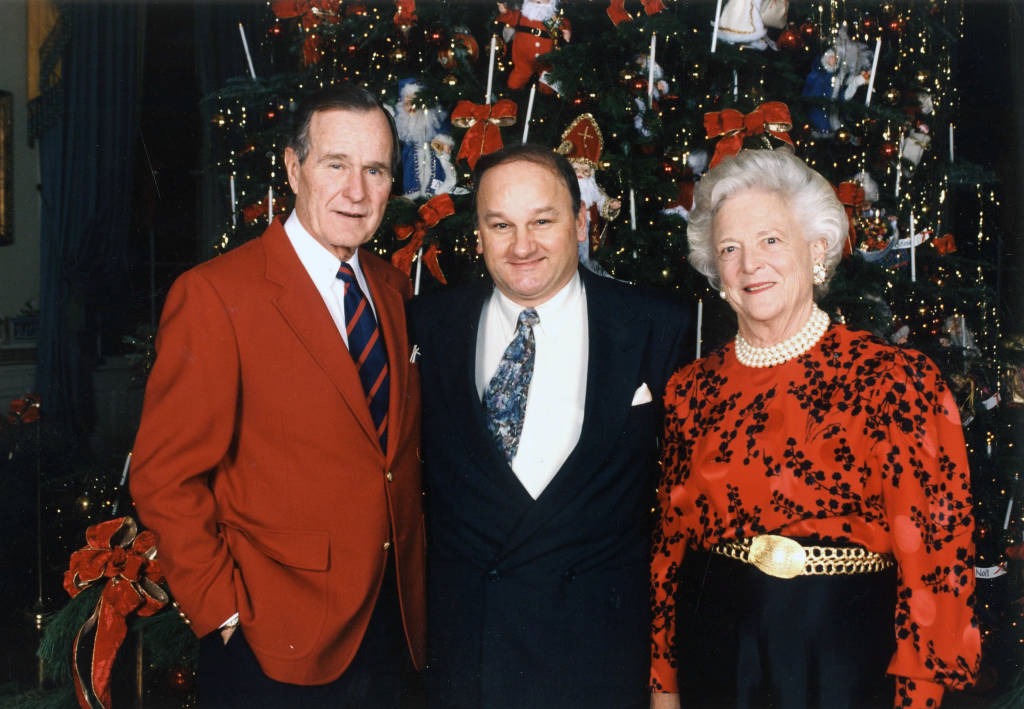
In interviews with The New York Times and CNN, Mesnier often spoke of the challenges and joys of working at the White House. He recounted the pressure of creating desserts that not only tasted exquisite but also reflected the dignity and grandeur of the office he served. “Every dessert I made had to be perfect,” he once said in an interview with The Washington Post. “There was no room for error when you’re serving the president of the United States.”
He insisted all desserts made in the White House would come only from the White House, causing him to work endless hours. Mesnier recalled making 1500 cookies without any assistance and another time creating a half ton of fruitcake by himself. He has prepared hundreds of desserts for State Dinners over the years—never once making the same dessert twice.
White House Archives
Chef Mesnier’s creations were not just about taste; they were also about presentation. He was known for his elaborate sugar sculptures and intricate chocolate work, which became a hallmark of White House events. His desserts were a blend of art and science, showcasing both his technical skill and his creative flair.

One of Mesnier’s most memorable moments came in 1981 when he created a life-size gingerbread house for the White House Christmas display. The gingerbread house, complete with chocolate decorations and sugar windows, became an instant sensation and set the stage for what would become an annual tradition. In a 2007 interview with NPR, Mesnier fondly recalled the reaction of President Ronald Reagan and first lady Nancy Reagan when they first saw the creation. “Their faces lit up with joy,” he said. “It was moments like that which made all the hard work worthwhile.”
Recalling working for Nancy Reagan, Mesnier said it was either ”Nancy’s way or the highway. And I like that, to be honest with you … Forget about compliments – if she didn’t complain, that was a compliment. But I loved her to death. She was a perfectionist.”
According to the Independent, on one occasion, “Nancy Reagan rejected three different desserts Mesnier presented to her for a state dinner to be attended by the queen of the Netherlands. On the Sunday before the Tuesday-night dinner, she called him back to the White House and gave highly specific instructions: to make 14 sugar baskets that are eight inches in diameter, and decorate each handle with six tulips made of sugar, before filling the baskets with sorbet and fresh fruit.”
“She tilted her head and said, ‘Roland, you have two days and two nights,’ and I said, ‘Thank you, Madam,’” Mesnier recounted to The New York Times. “It was another test, and you know it makes you strong. Mrs Reagan pushed me to be who I became.”
He said that Hillary Clinton was “less demanding” than Nancy Reagan. “If she [Nancy Reagan] didn’t complain, that was a compliment.”
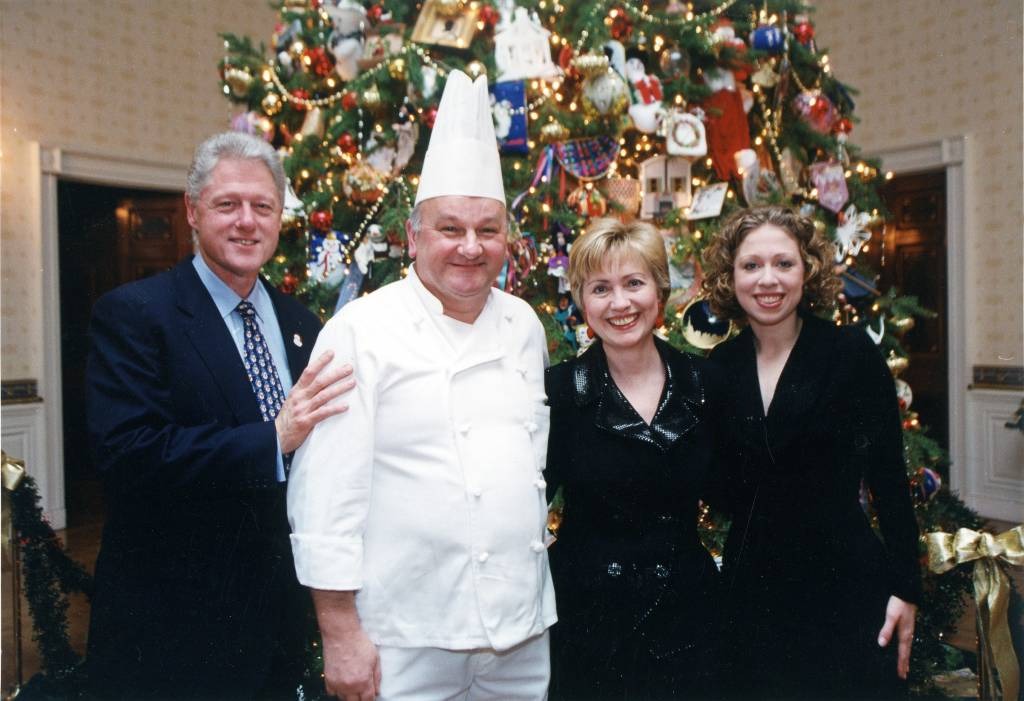
In 1994, then First Lady Hillary Clinton replaced the executive chef, who was French, because he favored heavier dishes that had an effect on President Clinton’s waistline. He also had a number of food allergies.
To avoid succumbing the same fate as the executive chef, Mesnier pivoted to more healthier options for dessert. One time he baked President Clinton a low-calorie strawberry cake. Clinton loved the cake so much he ate half of it for dinner. The next morning he woke up wanting the rest of the cake, but it was nowhere to be found. “No one could find the cake,” said Mesnier. “I want my goddamned cake shouted Clinton. It could not be located. We decided [Vice-President Al] Gore must have eaten it,” he said with a grin.
During an online White House Q&A in 2004, Roland was asked if the Secret Service restricted him from serving any “flaming desserts.” He replied that they do not, but he personally does because “on one Christmas, a lady caught on fire. She was wearing a fox shawl around her neck, she leaned over on the dessert table, and whoops, she was on fire.”
Another protocol set by the Secret Service was that any food items given to the president had to be destroyed for fear of contamination. According to the Washington Post, in 1987, Soviet Union President Mikhail Gorbachev presented President Reagan with two large tins of Russian caviar. Chef Mesnier and the executive chef were the only ones on duty when the head usher walked the box into the kitchen and ordered it dumped. Mesnier said to the chef, “I don’t know about you, buddy, but I am willing to die for what’s inside. So, I am taking one home and you can have the other one.”
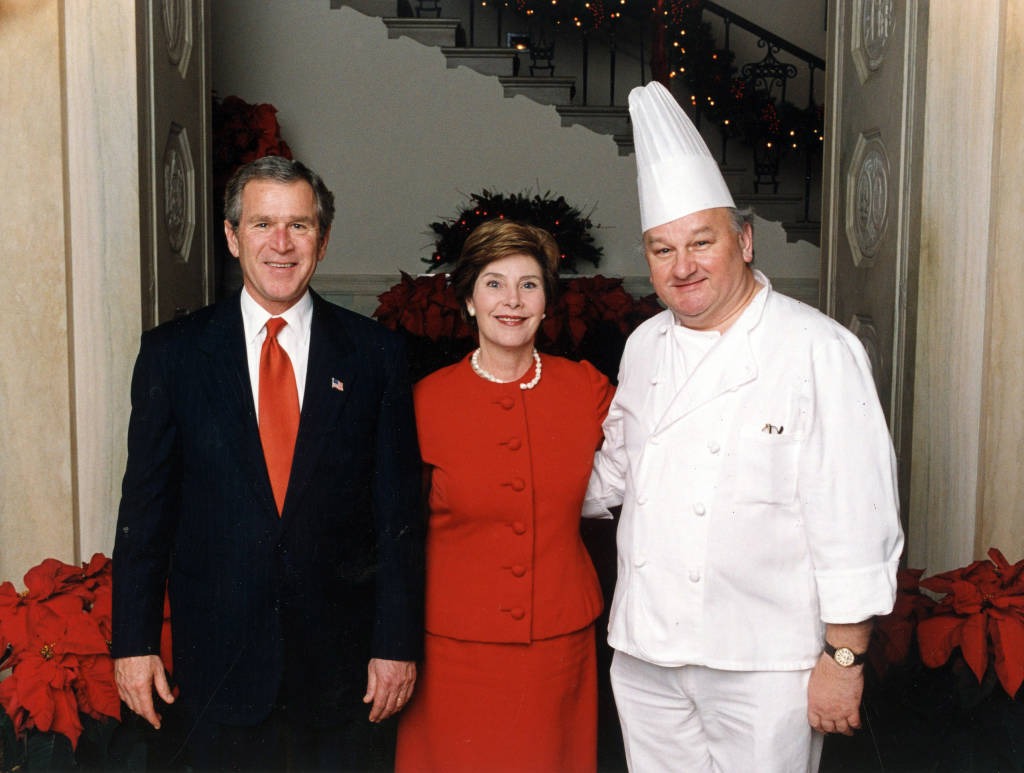
A Legacy of Mentorship
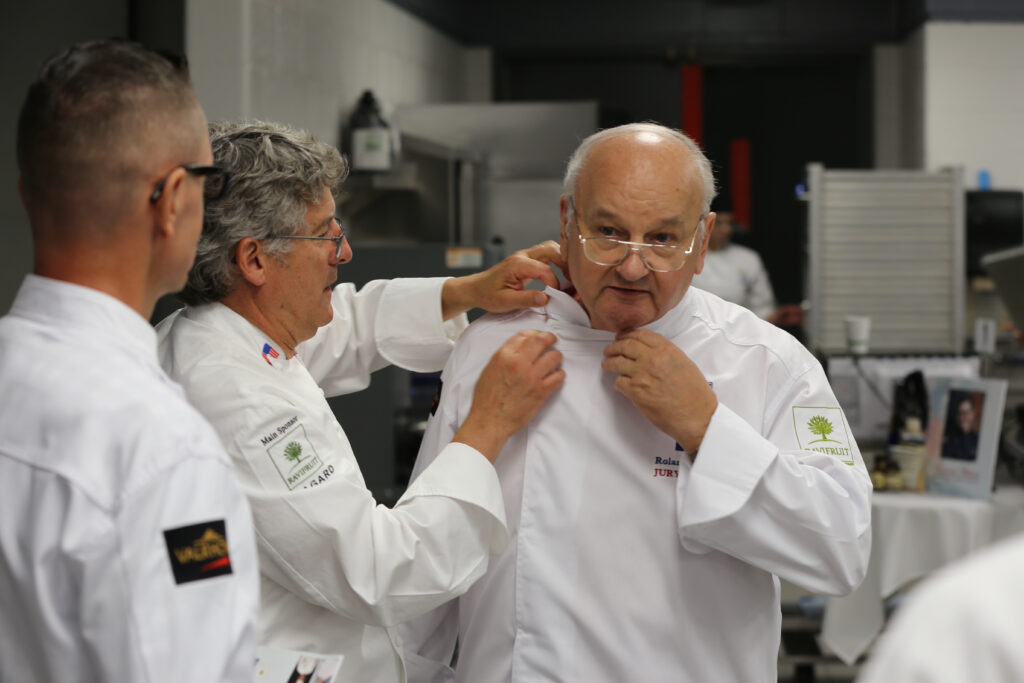
Beyond his professional accomplishments, Chef Mesnier was deeply committed to sharing his knowledge and passion with the next generation of pastry chefs. He mentored countless young chefs, many of whom have gone on to have successful careers of their own. Chef Mesnier’s influence extended far beyond the walls of the White House; he was a teacher, a guide, and an inspiration to many.
Chef Mesnier also authored several influential cookbooks, including Dessert University and A Sweet World of White House Desserts, which continue to inspire pastry enthusiasts today. These books, filled with recipes and anecdotes from his time at the White House, offer a glimpse into the world of one of the most celebrated pastry chefs in history.
In his cookbooks and interviews, Chef Mesnier often emphasized the importance of precision and discipline in pastry making. “Pastry is about science,” he explained in a 2010 interview with Bon Appétit. “You have to follow the rules exactly, or it won’t work. But within those rules, there is so much room for creativity. That’s what I love about it.”
Pastry Team USA
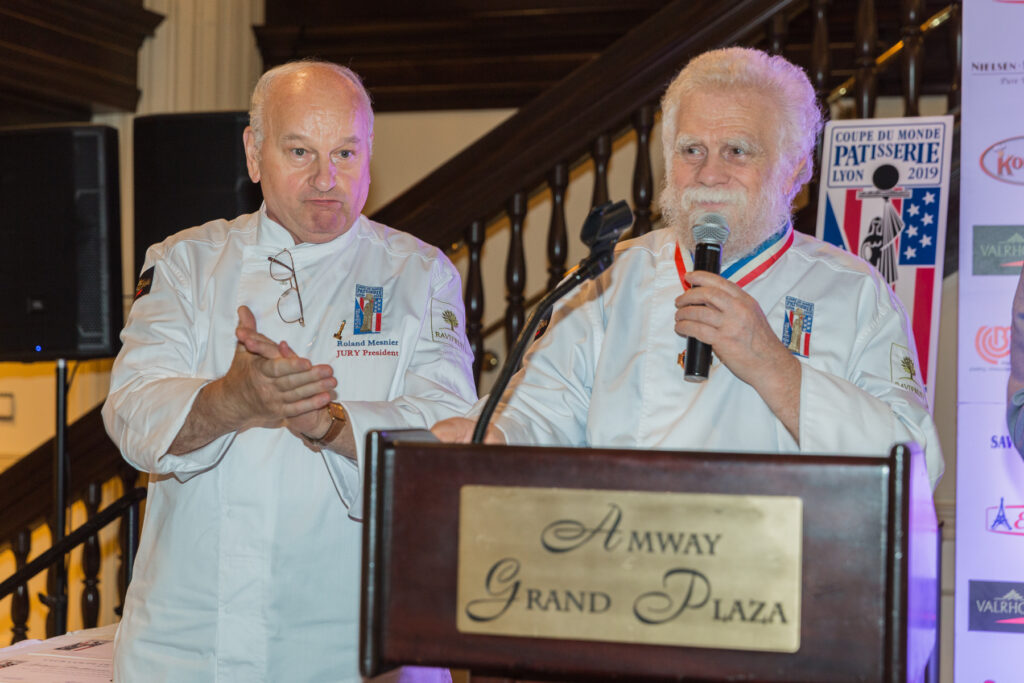
Coupe du Monde de la Pâtisserie
Chef Mesnier’s legacy is closely tied to his involvement with Pastry Team USA, the elite group of American pastry chefs who compete in the prestigious Coupe du Monde de la Pâtisserie (World Pastry Cup) in Lyon, France. His influence on the team’s philosophy and approach was profound, playing a key role in inspiring a new generation of American pastry chefs to compete on the world stage.
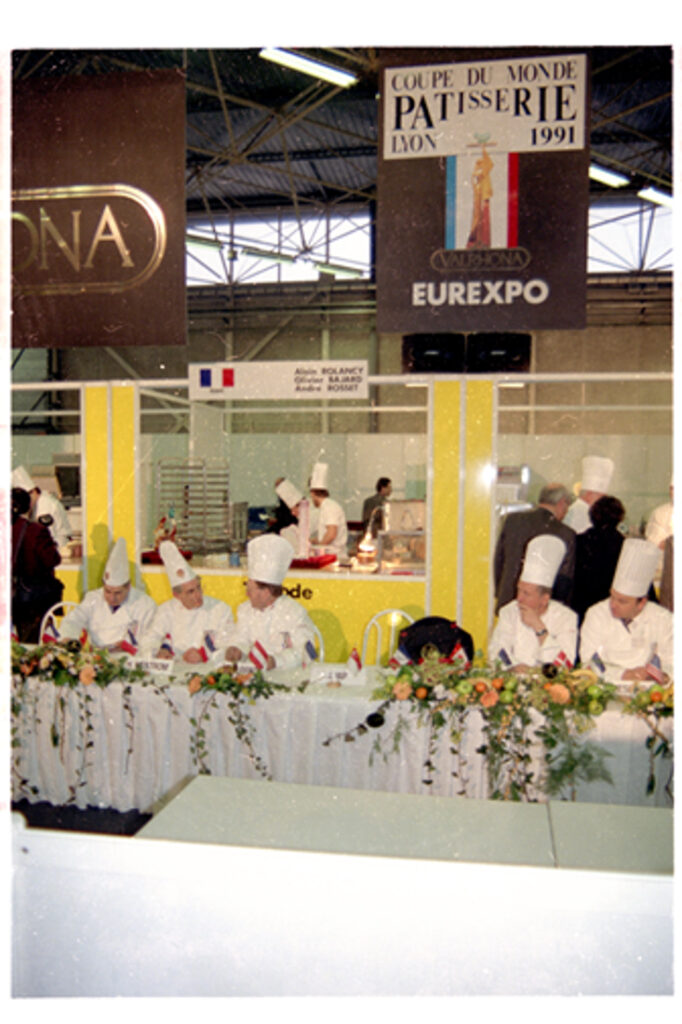
He was a driving force behind the formation of the U.S. Pastry Team (Club Coupe du Monde Team USA), contributing to its inception and nurturing its growth. In the late 1980s, MOF Chef Gabriel Paillasson, the founder and director of the Coupe du Monde de la Pâtisserie, asked Roland to establish a U.S. team.
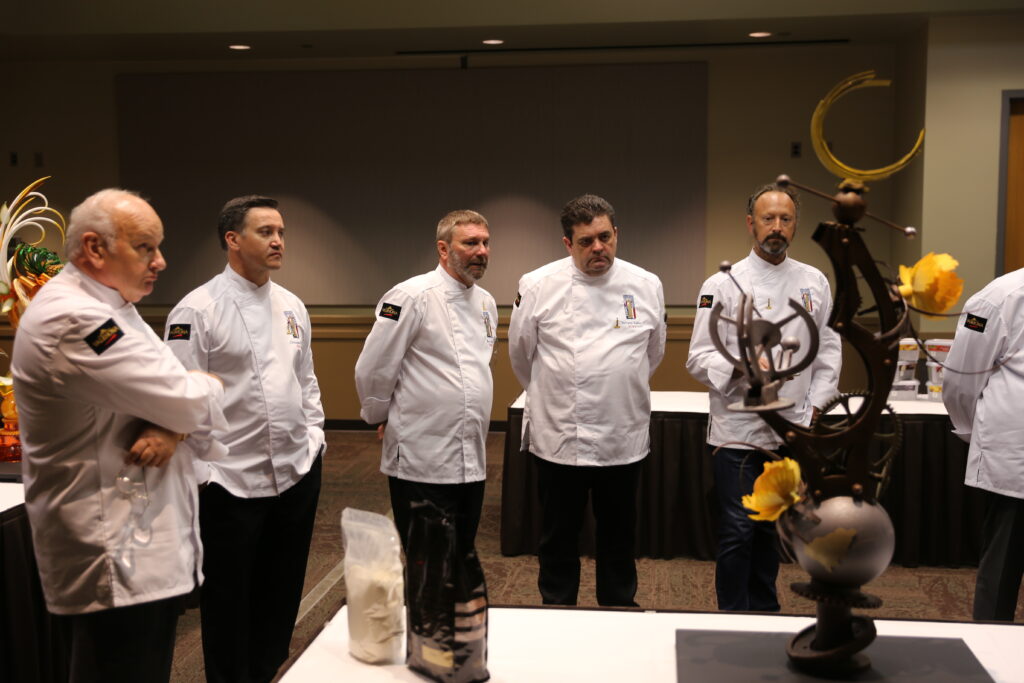
2019 Club Coupe du Monde Team USA tryout.
Chef Bob Bennett recalled that the team, coached by Chef Mesnier and also featuring chefs Anne Johnson and Michel Finel, was formed in the fall of 1988. They had only two months to practice before the inaugural Coupe du Monde de la Pâtisserie in 1989.
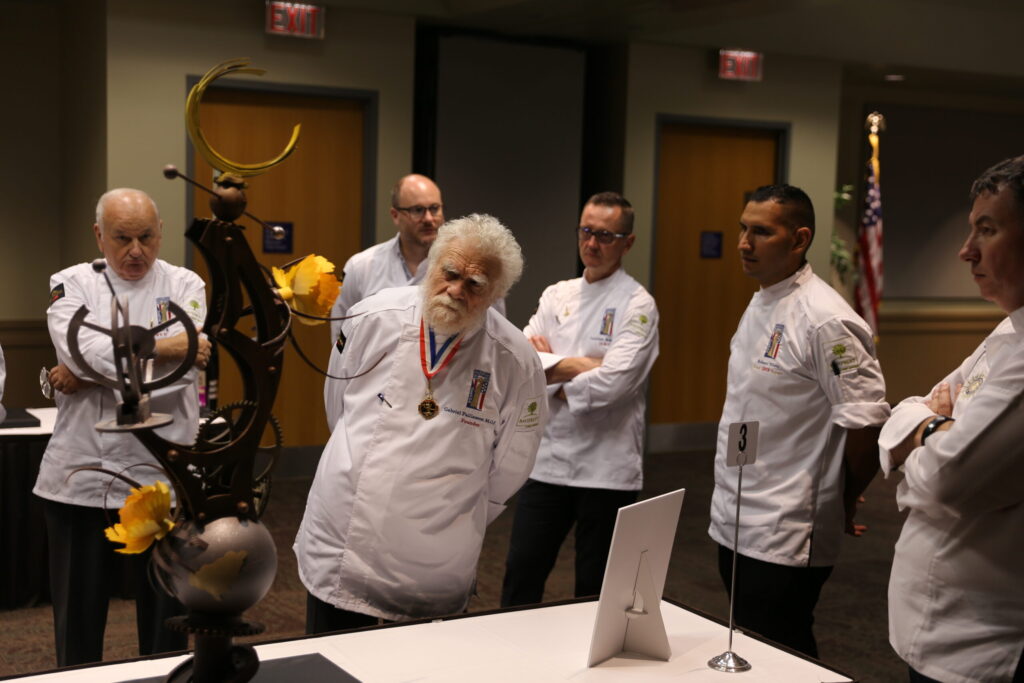
Chef Bob Bennett fondly recalls Chef Roland Mesnier’s deep respect for fellow chefs and his passion for the pastry craft. “Around 1987 or 1988, Mesnier visited Philadelphia for a special event that coincidentally took place near Le Bec Fin, where I was the executive pastry chef,” says Chef Bennett. “During this visit, Mesnier prepared an exquisite coconut mousse that made a lasting impression on all who tasted it. I made a chestnut mousse, and when Roland tasted it, he asked me for the recipe. I told him I would give it to him as long as he would give me the coconut mousse recipe. He did.”
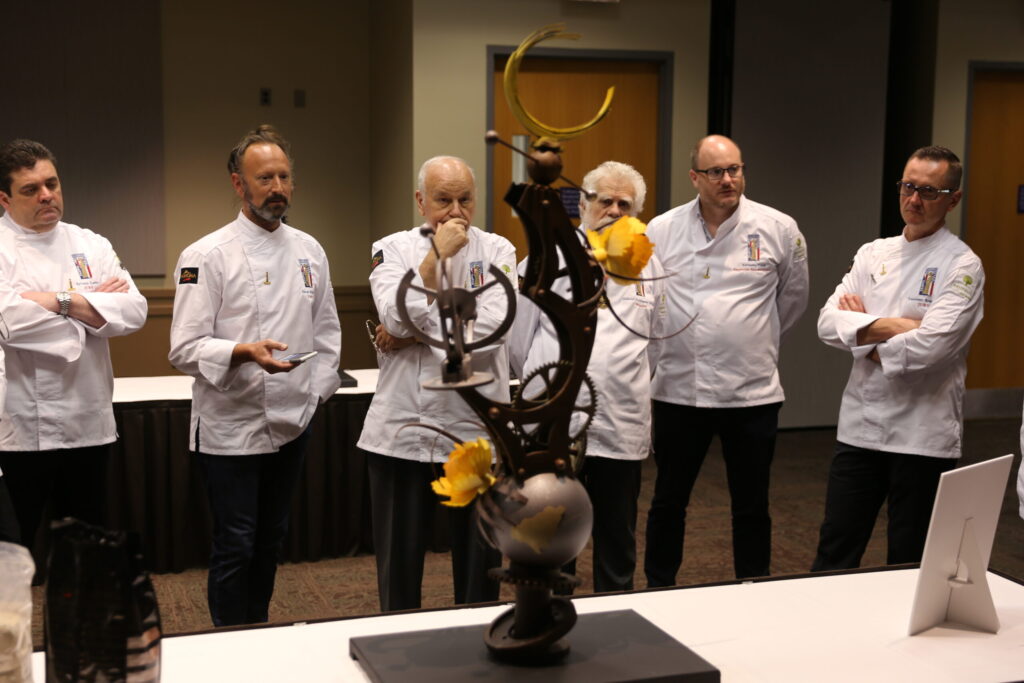
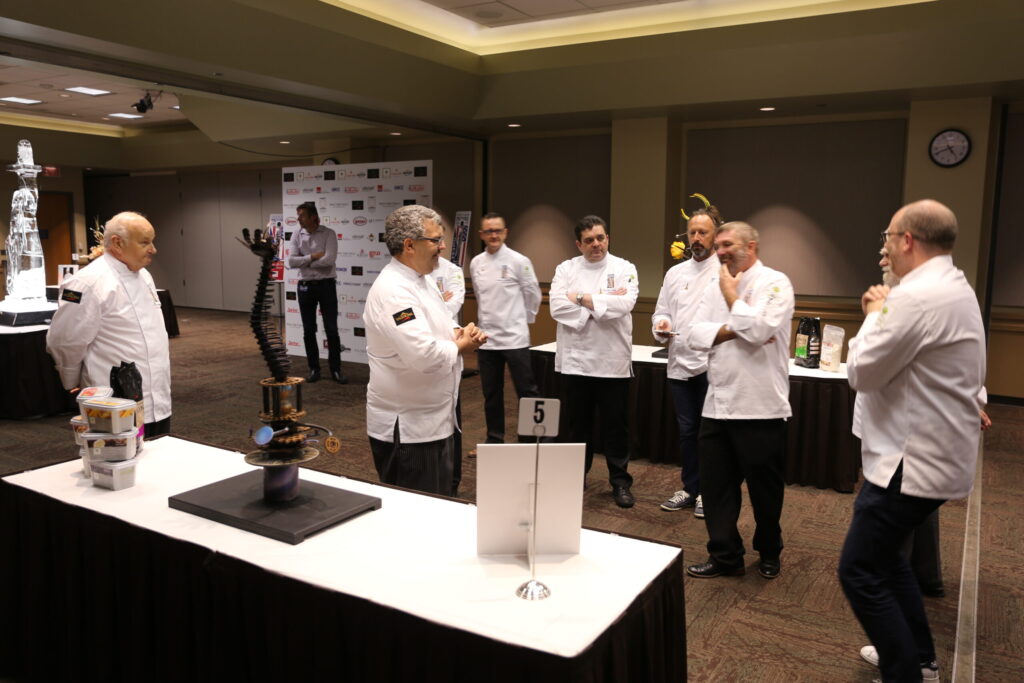
His dedication to excellence and commitment to mentoring young chefs were instrumental in shaping the team’s ethos. Under his guidance, Pastry Team USA became renowned for its creativity, technical skill, and dedication to pushing the boundaries of pastry art. “Roland was a true leader,” said Chef Stéphane Tréand, a former member of Pastry Team USA, in a 2015 interview with Pastry Arts Magazine. “He taught us to always strive for perfection, to never settle for anything less.”
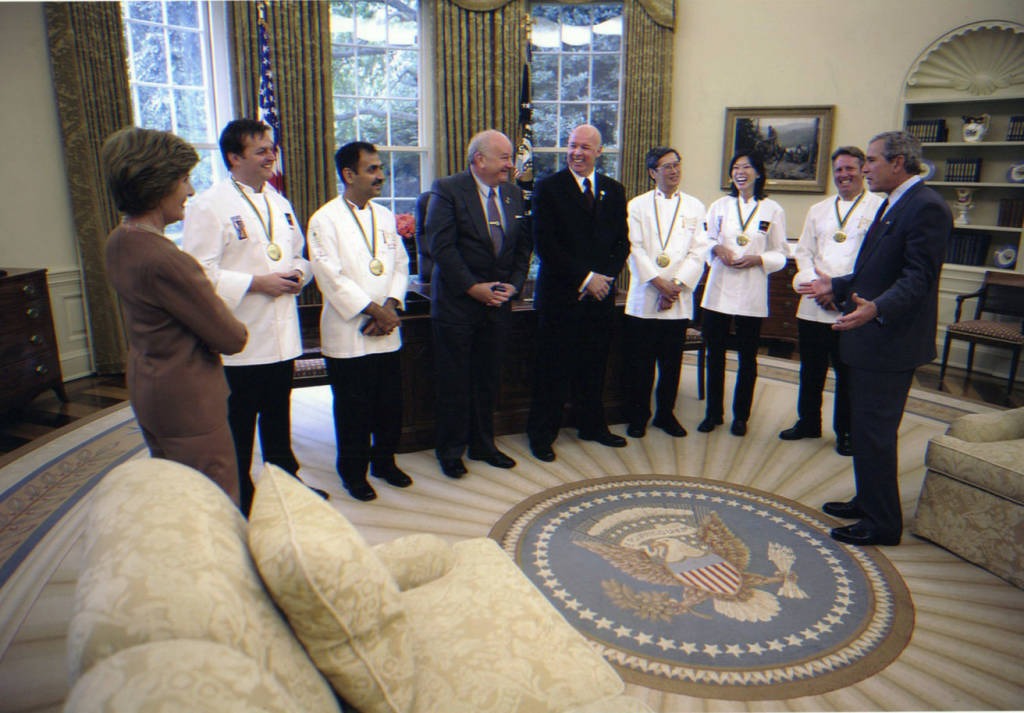
Chef Mesnier arranged for Club Coupe du Monde Team USA to visit the White House after their 2001 gold medal win at the Coupe du Monde de la Pâtisserie. The team met with President George W. Bush and First Lady Laura Bush.
Chef Mesnier’s influence on Pastry Team USA continues to this day, with each subsequent team striving to uphold the high standards and values he established. His legacy is evident in the team’s ongoing commitment to excellence and innovation, as well as in the countless young chefs who have been inspired by his example.
Even after retiring from the White House in 2004, Mesnier remained active in the culinary world. He continued to travel, teach, and share his knowledge, always eager to inspire the next generation of pastry chefs. His influence is visible in the many chefs he mentored, many of whom have gone on to achieve great success in their own right.
Mesnier reflected on his career and the importance of mentoring young chefs. “I have always believed that it is our duty to pass on our knowledge to the next generation,” he said. “That is how we ensure that the craft continues to evolve and improve. I am proud to have played a part in that.”
A Life of Service
Throughout his career, Chef Mesnier’s dedication to his craft was matched only by his dedication to serving others. His work at the White House was not just about creating beautiful desserts; it was about making people happy. Whether he was serving world leaders or preparing treats for the White House staff, Chef Mesnier approached his work with the same level of care and attention to detail.
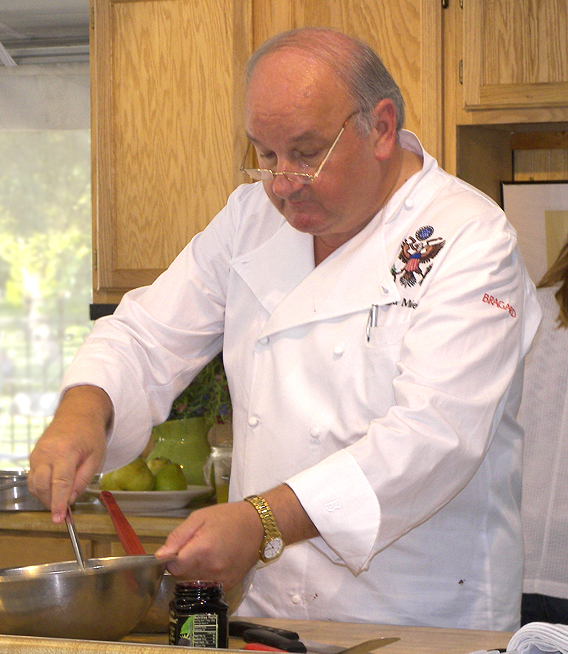
In a 2019 interview with The Guardian, Chef Mesnier reflected on his time at the White House and the role of food in diplomacy. “Food is a universal language,” he said. “It brings people together, breaks down barriers, and creates connections. That’s what I tried to do with my desserts—bring a little bit of joy into people’s lives.”
Chef Mesnier’s commitment to service extended beyond his work in the kitchen. He was also involved in numerous charitable activities, often using his culinary skills to support causes close to his heart. He frequently participated in fundraising events and was a strong advocate for culinary education. “Roland believed in giving back,” said Chef François Payard, a longtime friend and colleague, in a 2020 interview with Food & Wine. “He was always willing to share his time and expertise with others, especially young chefs just starting out.”
Retirement and Reflections
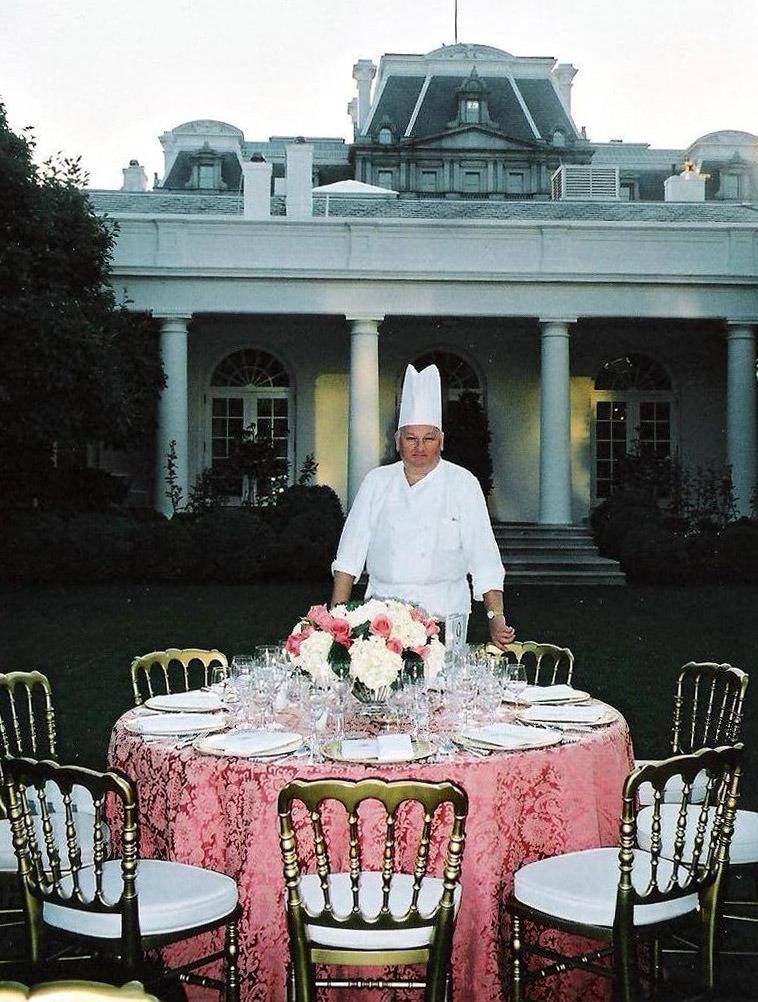
After retiring from the White House in 2004, (Chef Thaddeus Dubois replaced Chef Mesnier as White House Pastry Chef. Chef Dubois was a member of the silver medal winning Club Coupe du Monde Team USA 1997), Chef Mesnier continued to travel, teach, and share his passion for pastry. He remained a beloved figure in the culinary world, often appearing as a guest speaker at events and festivals. Even in retirement, his enthusiasm for pastry never waned. In a 2018 interview with The Wall Street Journal, Chef Mesnier spoke about his love for the craft. “Pastry is my life,” he said. “I could never give it up completely.”
Chef Mesnier’s retirement years were also a time of reflection. In his memoir, A Sweet Journey: My Life in Pastry, he looked back on his extraordinary career and the experiences that shaped him. The book, filled with personal stories and insights, is a testament to a life lived with passion, dedication, and a love for pastry. “I have had a wonderful career,” Chef Mesnier wrote. “I have been fortunate to do what I love and to share that love with others. I can’t think of anything more fulfilling.”
Roland Mesnier passed away on 26 Aug 2022, leaving behind a legacy that will continue to inspire generations of pastry chefs to come. His contributions to the culinary world, particularly in the realm of pastry, are immeasurable. Chef Mesnier’s journey, from a small town in France to the kitchens of the White House, is a testament to the power of passion, perseverance, and a commitment to excellence.
As we remember Chef Roland Mesnier, we celebrate not only his remarkable career but also the joy and inspiration he brought to so many. His legacy lives on in the hearts and minds of those he touched, and his influence will continue to be felt for years to come.